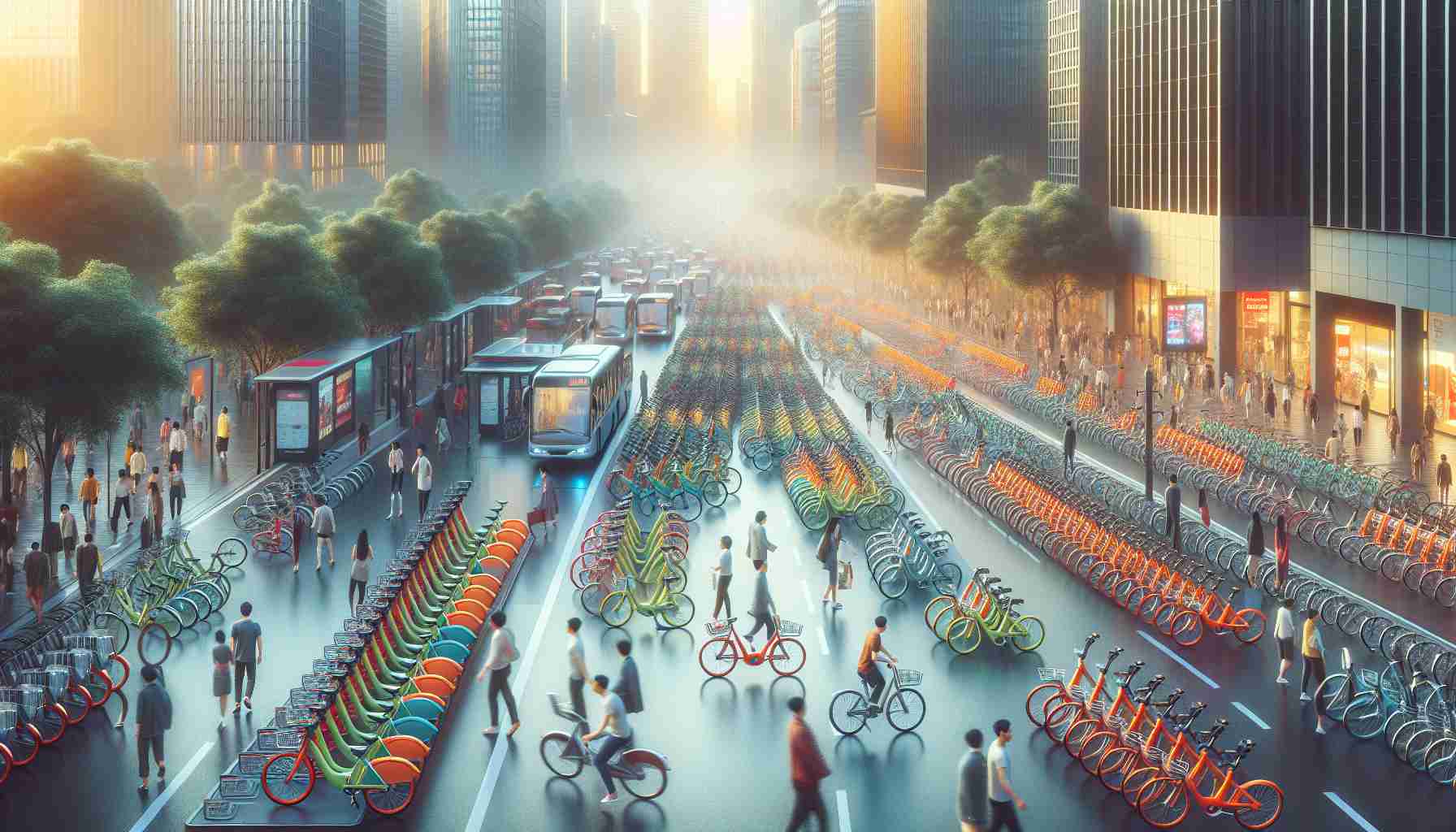Dawn in the Jianguomen district of Central Beijing presents a serene yet active picture as local residents seamlessly incorporate cycling into their daily routines. A father starts the day teaching his child to ride, while elsewhere, students make use of smart technology to lock up their bikes after reaching their destinations. A popular choice for its affordability and eco-friendliness, cycling in Beijing is largely supported by a thriving bike-sharing system.
Beijing’s streets are dotted with a spectrum of blue, yellow, and green bikes, conspicuously parked outside subway stations, numbering in the dozens to hundreds. These bikes simplify urban commuting, making travel easier and widely embraced. Utilizing mobile apps, residents can unlock bikes, ride to their destinations, park, and complete payment with scan-and-go efficiency. Dai Zhong, the East Asia Representative for the Institute for Transportation and Development Policy, daily rides a shared bike to work, advocating for it as one of the most effective modes of commuting as well as a form of exercise.
Increasingly, more cyclists populate Beijing’s roads, and a shifting mindset towards cycling is evident. The proliferation of bike lanes across most areas of Beijing, and even dedicated bike traffic signals in certain quarters, highlights the city’s commitment to cyclist infrastructure.
In stark contrast to China’s proactive stance, Delhi, India, struggles with the lack of cycling infrastructure. Seldom are bikes seen as a solution for “the last mile” of commuting in the city. The executive director of India’s Centre for Science and Environment, Roy Choudhury, expressed the challenge of this nascent stage of bike-sharing in Indian cities. With bike lanes constituting a meager 1% of the total road network in Delhi, predominantly serving a cosmetic purpose, the situation underscores the necessity to address the needs of cyclists, especially in nurturing a safer traffic environment for the predominantly low-income bicycling population.
Promoting cycling and walking remains critical to combating air pollution in Delhi and other Indian cities. Despite acknowledging the importance of zero-emission strategies, there has been a notable lack of investment and development in pedestrian and cyclist-specific infrastructure, overshadowed by car-centric urban planning priorities.
Relevant Facts:
– China’s bike-sharing pioneers such as Mobike and Ofo have contributed significantly to the global expansion of bike-sharing systems.
– In 2017, the bike-sharing boom led to problems in cities across China with cluttered sidewalks caused by abandoned and broken bikes.
– Bike-sharing in China is supported by significant technological advancements, including QR codes and GPS tracking, facilitating ease of use for customers and operation for providers.
– Some Chinese cities have implemented electronic fencing technology to ensure that shared bikes are parked within designated areas, addressing the issue of indiscriminate parking.
Key Questions and Answers:
Q: What are the environmental impacts of bike-sharing systems in China?
A: Bike-sharing systems have the potential to reduce carbon emissions by replacing motorized transport for short trips, leading to improved air quality and reduced traffic congestion.
Q: How has the Chinese government responded to the bike-sharing wave?
A: The Chinese government has integrated bike-sharing into urban transportation planning, setting up regulations to manage the number of bikes and encouraging infrastructure development such as dedicated bike lanes.
Challenges and Controversies:
– Over-saturation of the market with too many bikes and companies, leading to financial losses and waste due to an oversupply.
– Managing the maintenance and redistribution of bikes to ensure they are available and functional where needed.
– Ensuring the bike-sharing system is inclusive and accessible to all socioeconomic groups.
Advantages:
– Provides a low-cost, convenient and flexible transportation option for city dwellers.
– Reduces reliance on private cars and public transportation, thereby decreasing traffic congestion.
– Promotes healthier lifestyles through physical activity.
– Environmentally friendly by lowering carbon emissions if it replaces motorized vehicle trips.
Disadvantages:
– Possible sidewalk clutter and urban blight from improperly parked or abandoned bikes.
– Maintenance can be challenging if the user base does not treat the bikes with care.
– Inequity issues if the system caters mostly to tech-savory and credit-rich individuals, excluding those without smartphones or digital payment methods.
For further information, here is a link to the Institute for Transportation and Development Policy, which provides resources and research related to sustainable transportation policies and practices including such bike-sharing systems. Additionally, one might consider visiting the UN Environment Programme for more reports and information on global initiatives to address air pollution and promote sustainable urban transport options.
